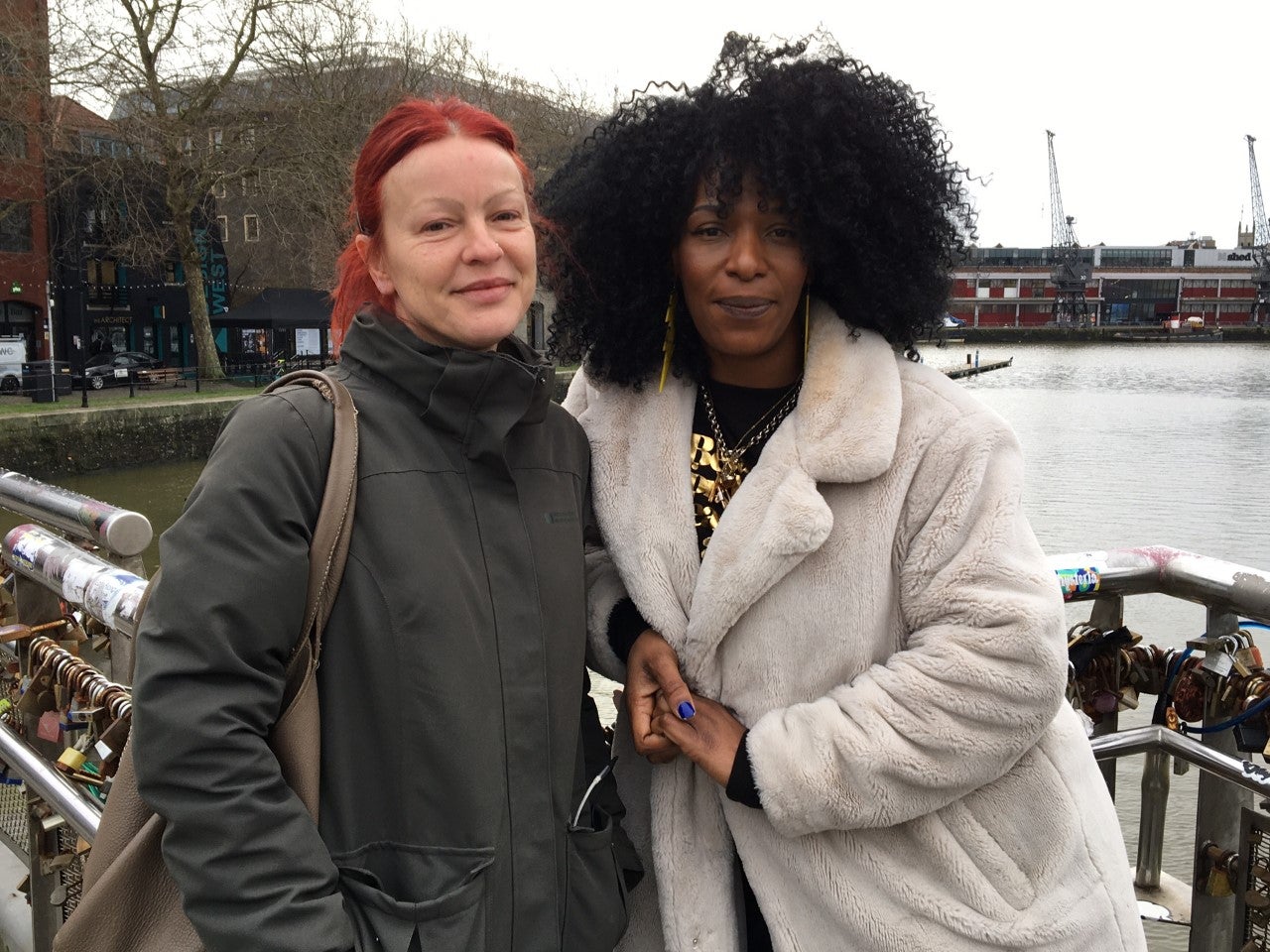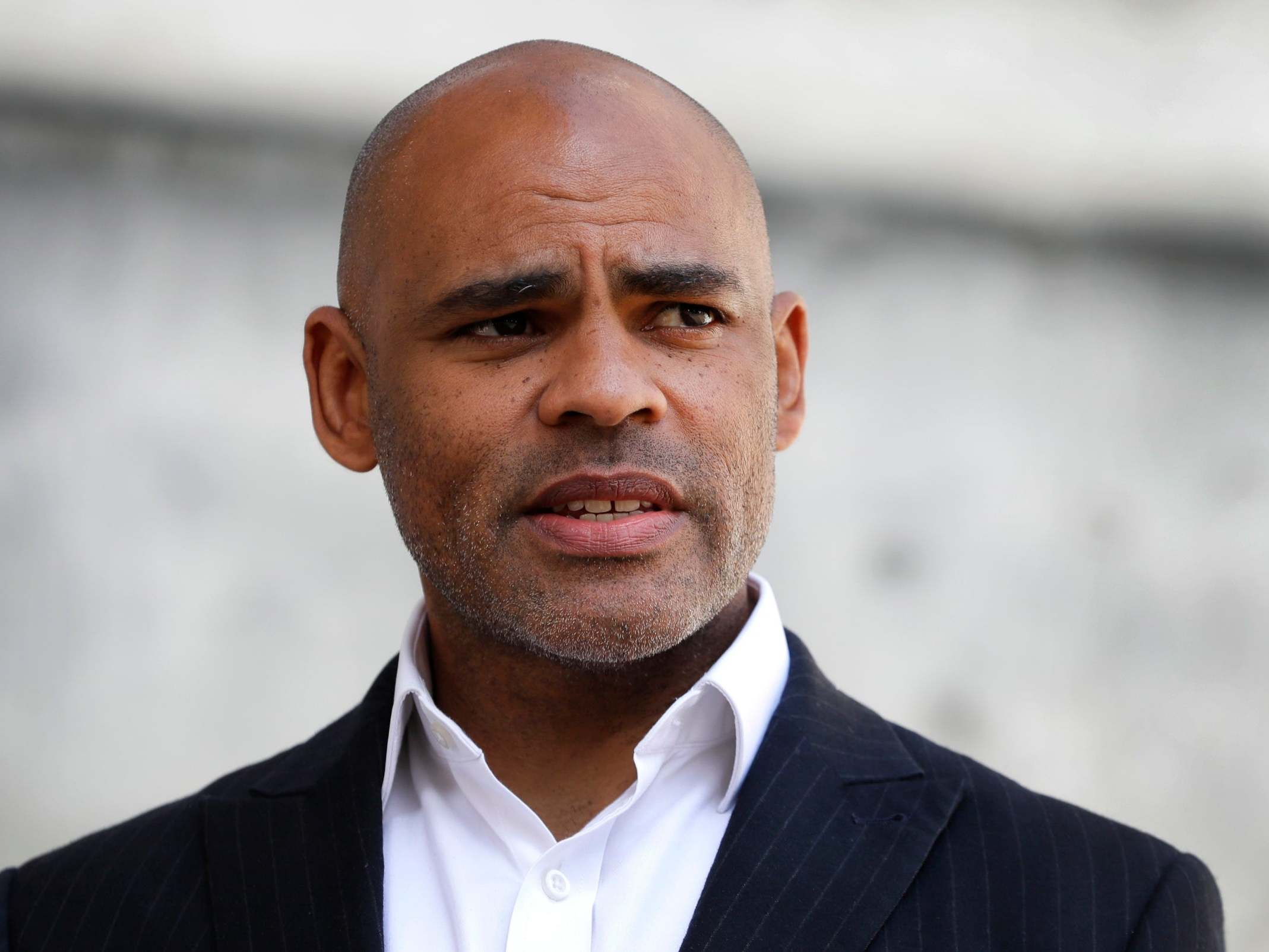Life after Colston: Bristol looks to future without its toppled patron
Statue removal ‘was pure ecstasy’ for some – but city must now grapple with how to move on

Your support helps us to tell the story
From reproductive rights to climate change to Big Tech, The Independent is on the ground when the story is developing. Whether it's investigating the financials of Elon Musk's pro-Trump PAC or producing our latest documentary, 'The A Word', which shines a light on the American women fighting for reproductive rights, we know how important it is to parse out the facts from the messaging.
At such a critical moment in US history, we need reporters on the ground. Your donation allows us to keep sending journalists to speak to both sides of the story.
The Independent is trusted by Americans across the entire political spectrum. And unlike many other quality news outlets, we choose not to lock Americans out of our reporting and analysis with paywalls. We believe quality journalism should be available to everyone, paid for by those who can afford it.
Your support makes all the difference.It was 1925 when the Reverend Henry J Wilkins published a pamphlet in Bristol that would see him shunned by the city he loved.
In it, he called for an end to what he labelled the cult of Edward Colston. This person was not a heroic 17th century merchant prince, the churchman wrote. He was a slaver and a trader in human flesh. It was wrong to idolise him.
“He sort of said, ‘Look, this myth has been built up over the last 60 years and it shouldn’t have’,” says Dr Roger Ball, co-founder of the Bristol Radical History Group today. “And he was basically shut down.”
More than a century on, the fight this quiet reverend started was, this week, perhaps finally won when four protestors charged with criminal damage for pulling down Colston’s city centre statue were exonerated before a court of law.
The four – Jake Skuse, Rhian Graham, Milo Ponsford and Sage Willoughby – were found not guilty after successfully arguing that the monument’s presence had constituted an ongoing hate crime and it was, therefore, reasonable to remove it.
“This is a victory for racial equality,” said Willoughby immediately afterwards. “It’s a victory for anybody who wants to be on the right side of history.”
Yet it is a victory that raises a unique question for this south-west city: how exactly does a place move on after more than a century of fetishizing a man who committed crimes against humanity?

When Jen Reid thinks of the day the statue came down, she still breaks out in a smile. She herself was pictured atop the plinth making a black power salute.
“It was pure ecstasy,” the 51-year-old says. “It was years of release rushing out.”
For decades she had hated her daily walk past the thing. It was a constant reminder, she said, of the oppression and the evil done to her ancestors. In a city where schools, pubs, buildings, roads and even the local indie music venue were all named after Colston, the statue came to symbolise the sheer effrontery that people of colour – 18 per cent of the population – were expected to live with.
So, when the protestors rolled it towards the River Avon that day – to Pero’s Bridge to be exact; named after an 18th century slave – Reid knew she was experiencing history. She thought about trying to stand up front and say something about the statue joining the 19,000 Africans thrown overboard while being trafficked to America on Colston’s ships.
“But there wasn’t time,” she says as she stands back on the waterfront today. “Everyone was too excited. It was just like, ‘get it in!’ And he was gone.”
Any suggestion that this was mob-rule are dismissed. “It was a targeted political act,” the mother-of-one says “It wasn’t random violence. The people involved knew why they were going for that object. No one was hurt, nothing else was damaged. It was peaceful. It was like a carnival. It went in the water and everyone went home.”
Within weeks of the action, some 70 statues of people linked to the slave trade were removed across the UK. For the first time, it seemed, there was a widespread realisation that colonialists might not be appropriate for veneration: a YouGov poll found that a majority of people favoured Colston’s removal (if not necessarily the way it was done). In Bristol, itself, the slaver’s name was erased from all those roads, schools and buildings. The Colston Arms pub briefly became Pubby McDrunkface.
“It certainly opened up a conversation that wouldn’t have existed otherwise,” says Christine Townsend, a Green Party councillor and a member of the Countering Colston campaign group. “We’ve been trying to draw people’s attention to this for years and then, within days of the statue coming down, you have these institutions, I suppose, educating themselves about Colston and about why it is such a hateful thing … It took that moment for all those institutions to address that.”
To all intents and purposes, the court’s verdict on Wednesday reflected exactly that point.
The jury did not clear the Colston Four because they weren’t engaged in the damage. They were and they admitted it. Rather, they were found not guilty because the jury essentially accepted they were within their rights to act as they did.

The difficulty is, of course, not everyone agreed.
Ask Mark Weston, the leader of the city council’s Conservative group, if Bristol is more divided as a result of the verdict, and he has a simple answer: “Yes,” he says.
Why? “A great deal of the suburbs don’t agree with what happens in the centre these days,” he answers. “The city is more divided than it ever was and I don’t think the verdict will help that at all”
It has set, he worries, a broader precedent on political vandalism. “What?” he asks. “Are we all allowed to tear down any statue we disagree with?”
His own colleague, Richard Eddy, once said that if a new plaque detailing Colston’s involvement in the slave trade was added to the statue – as was once proposed – people would be within their rights to rip the plaque down. “Well,” says Weston, “I don’t believe as a point of principle in vandalising anything but congratulations on turning this into a blue-on-blue issue.”
Somewhere in the shadows of all this, meanwhile, is a centuries-old group called the Society of Merchant Venturers – a highly influential body of Bristol’s wealthiest elites which, for decades, has fought tooth-and-nail against removing Colston from civic life. (Reverend Wilkins was once a member, though not for long after his pamphlet).
While the group - which runs nine schools and manages 220 acres of city park - has now said it is right the statue hascome down, campaigners have begun to question why such an inherently opaque organisation appears to hold such sway in the city?
“These people aren’t elected but they have huge influence on our lives,” says Ros Martin, a writer, artist and, at 60, a long-time campaigner in the city. “Seeing it disbanded would be good for Bristol now.”
The society did not respond to request for comment.
Trying to pick his way through all this is Marvin Rees, Europe’s first directly elected black city leader and a man who has been criticised by all sides: on the one hand for not offering more support to the four on trial; and on the other for not more roundly condemning them.
He defends himself and the Labour-run council for not taking the Grade II listed statue down earlier by saying it would have drained political time and capital he wanted to spend elsewhere: “on housing, employment, transport, all those policy areas that actually make a substantive difference to people’s live”.
Bristol, he points out, remains one of the most unequal cities in the UK. There is a life expectancy difference of 16 years between rich and poor. “That’s the violence we need to address,” he says.
All the same, he is explicit that there now needs to be some kind of resolution on Colston and some way of addressing of the city’s slaver past. Some have suggested a museum similar to Liverpool’s International Slavery Museum where the toppled statue could lie, broken, for all to see.
Rees, himself, has set up the We Are Bristol History Commission to consider such possibilities.
“Look,” he says, “Bristol is a city in which some people are absolutely elated at the statue being pulled down in the way it happened. Some people are sympathetic at the statue coming down, but not the way it happened. And some people are dismayed at it coming down, right? And there’s no way of delivering a future that is satisfactory to them all.”
He considers all this a moment: “all we can do is try and find an approach where, whether you get what you want or not, you feel you’ve been included and respected.”
Join our commenting forum
Join thought-provoking conversations, follow other Independent readers and see their replies
Comments